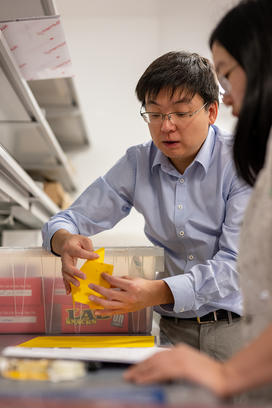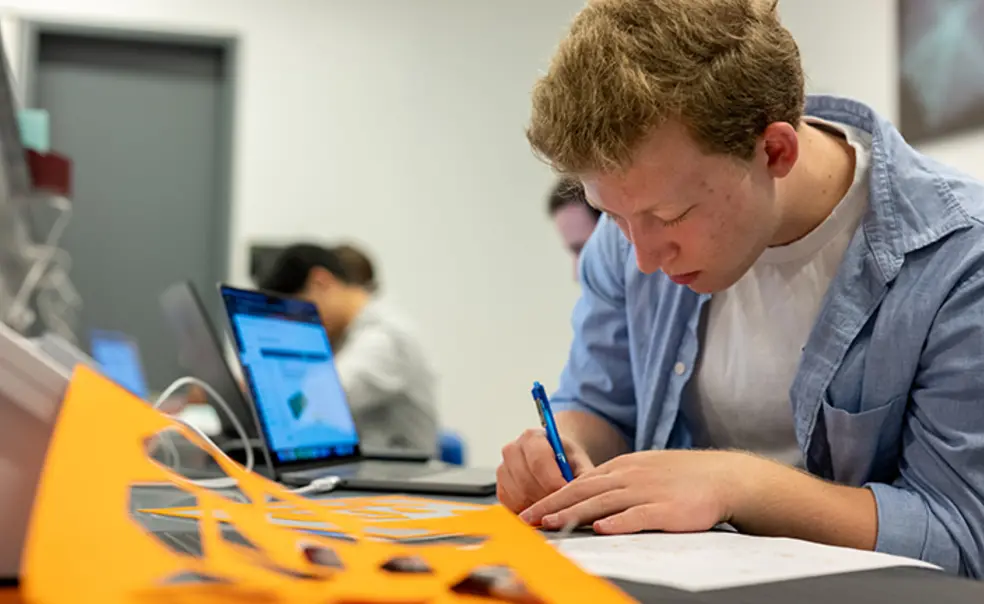Class Close-Up: Students in ‘Origami Engineering’ Connect Art and Science
It may seem like arts and crafts, but professor Glaucio Paulino says ‘origami is very deceiving’
The word origami likely conjures up thoughts of ancient Chinese or Japanese masters carefully folding paper for use in religious rituals or to create delicate art. Or maybe you think of a classroom full of small children making simple cranes or frogs.

But Glaucio Paulino, a civil and environmental engineering professor, can list many of the complex and modern usages of this age-old concept: “Space exploration, airplanes, deployable systems, robotics, architecture, aerospace engineering, mechanical engineering, now automobiles [for example, energy-absorbing crash boxes].”
“Origami is everywhere,” Paulino said.
That includes Princeton, with the addition of Paulino’s course, “Origami Engineering,” which is new this fall, though Paulino taught it at Georgia Tech, where he worked before joining Princeton’s faculty last year. The course has both undergraduate and graduate sections.
On a Tuesday afternoon in late September at the Friend Center, Paulino began his undergraduate class by asking students to use paper, glue sticks, and pieces of interlocking plastic to construct collapsible egg boxes, similar to egg cartons found in grocery stores. It may seem like arts and crafts, but Paulino told PAW that “origami is very deceiving, extremely deceiving, because it looks easy until you try to do [it] by yourself.”
The math that came next underscored that point. Quickly after the students finished their egg boxes, Paulino dove deep into complicated equations that examined the structures’ infinite configurations; by the end of class, every blackboard had been covered with derivations.
Mechanical and aerospace engineering major Liza Cotter ’25 likes the way that Paulino uses different methods to teach the same concept. “Sometimes the paper to me feels a little mysterious, but then you see the math, and you’re like, ‘OK. This is why it works,’” she said.
Paulino often encourages his students to use both sides of their brain and designed the class in a way that motivates them to do just that. He said he’s fascinated by the connection between art and engineering.
Aside from the twice-a-week lectures, the undergraduates also complete lab exercises each week overseen by postdoc Tuo Zhao.
Zhao said that “the theory’s quite involved,” but the labs provide a chance to get extensive hands-on experience. “Students can really see origami,” he said.

Looking ahead, Paulino is especially excited “to bring Japan to Princeton,” with a class visit by Tomohiro Tachi, a professor at the University of Tokyo. Paulino calls him “the Michael Jordan of origami,” pointing to the “amazing” way Tachi combines math, engineering, design, art, and the sciences all in one package.
For the final, undergraduates will work solo or in groups of up to four to design and prototype an origami-inspired solution to an engineering or societal problem. They’ll be asked to write a report as well as create a poster and present their engineering product at a “trade show,” which will be open to the public, during final exam period.













No responses yet